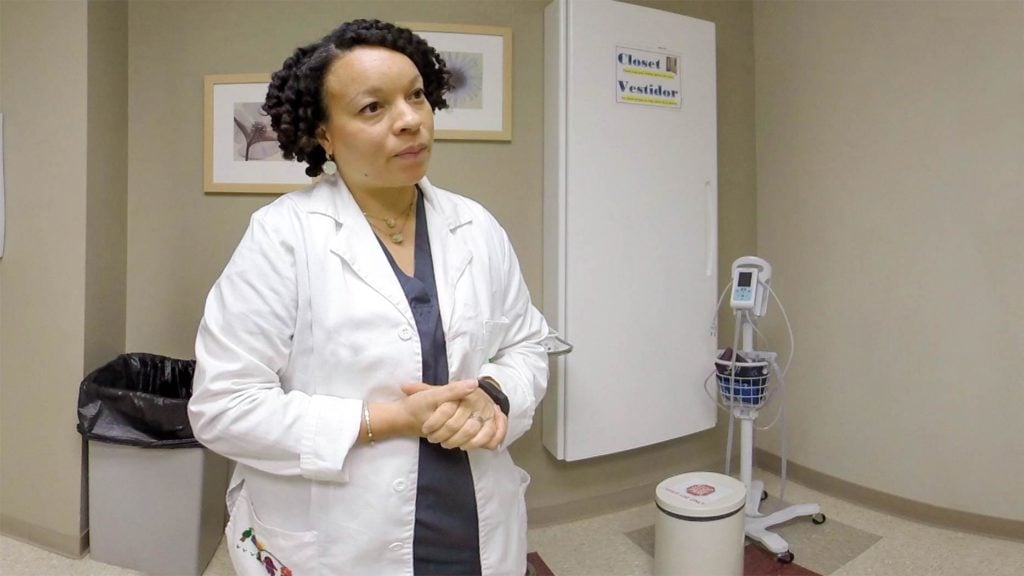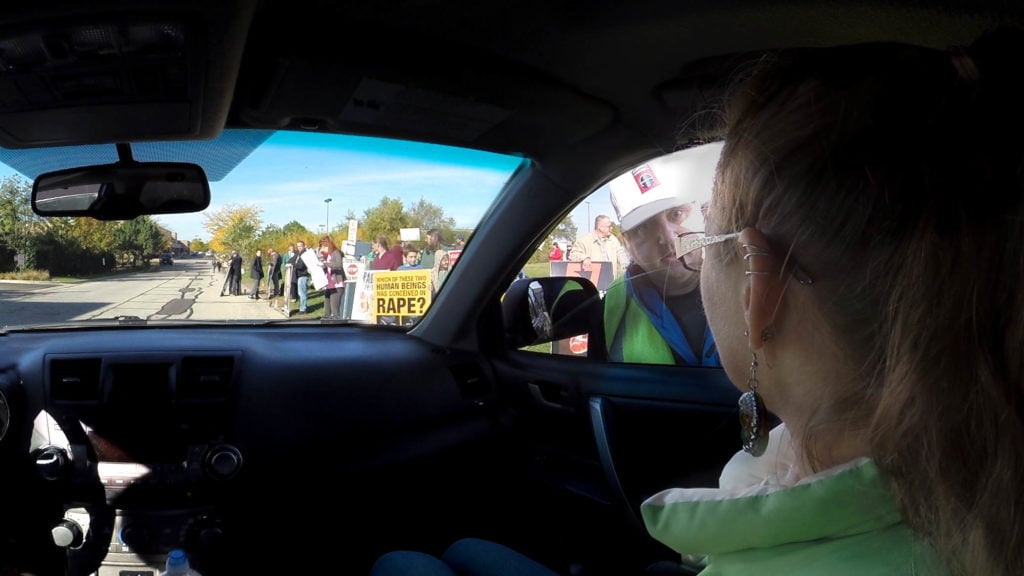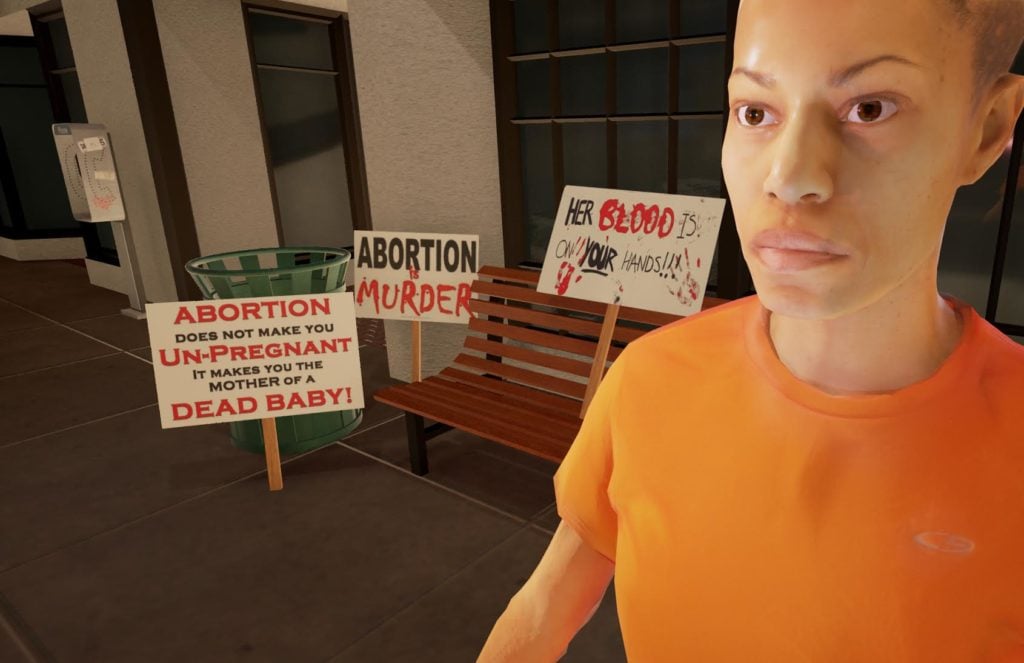Politics
Planned Parenthood’s VR Art Film Puts You in the Shoes of a Woman Braving Anti-Choice Protesters
"Across the Line" debuted at the Brooklyn Museum, and was a selection at Sundance.

"Across the Line" debuted at the Brooklyn Museum, and was a selection at Sundance.

Jazia Hammoudi

In the battle over reproductive rights, Planned Parenthood has a new tool. With artist-journalist Nonny de La Pena and the creators at 371 Productions, the 101-year-old organization is turning to virtual reality to promote empathy, dropping viewers into the POV of a young woman trying to access a clinic while braving a gauntlet of anti-abortion protesters.
Planned Parenthood first approached “godmother of VR” Nonny de La Pena, of Emblematic Productions, at Sundance in 2012 after seeing her award-winning piece Project Syria, which sought to create awareness about child refugees.
The result is Across the Line, a VR experience that already earned an Official Selection at the 2016 Sundance Film Festival. A few weeks ago, the organization’s executive vice president and chief experience officer Dawn Laguens debuted the work at the Brooklyn Museum’s Brooklyn Conference for Social Change. Planned Parenthood is rolling out the experience to law enforcement agencies, politicians, universities, and arts organizations of all kinds.
To create the environment viewers experience in Across the Line, de la Pena and her team traveled to reproductive health centers across the country. They documented what she calls the “consistent pattern of intimidation and provocation by protesters” that patients face on a daily basis, as she told artnet News recently in a phone interview.
The experience is composed of three parts. The first scene, shot in 360 video, takes place in a health center exam room and introduces users to a real former patient of Planned Parenthood’s services, as well as a real doctor.
The next scene, also shot in 360 video, places users in the patient’s car as she and a friend approach the health center. Here, a real protester approaches the car, as they ask for directions, attempting to bully into stopping. The protester and his exhortations are real.

Across the Line VR film still, (2017). Courtesy of Emblematic Group.
For a viewer, the tension is palpable. By honing in on one woman’s lived experience rather than a political perspective, the project aims, according to de la Pena, to “create a bridge between people on both sides of the political divide.”
The heightened emotional situation these lead-in scenes create builds to the work’s final installment, which is where the true VR experience comes into play. Now, you enter the story in first person. The viewer becomes the woman seeking treatment.

Across the Line VR film still, (2017). Courtesy of Emblematic Group.
De la Pena explains that she found that the anti-choice protesters held themselves back when a camera was present. As a result, she recorded the audio of the picket lines, which is overlaid with digitally animated characters. These menacing digital figures, responding to cues, approach and harass the viewer attempting to “cross the line” to get into the clinic.
Can VR change minds about abortion rights? In order to assess the impact of Across the Line and VR’s empathy-driving potential, Planned Parenthood partnered with consultants at the Sea Change Program and SKDKnickerbocker to conduct both quantitative and qualitative research on a broad range of viewers, following the piece’s initial screening in 2016. They have been able to observe modest changes, with viewers “express[ing] more disapproval of clinic harassment” after undergoing the virtual experience.
You can watch the film on YouTube (embedded below), or via Google Cardboard, Samsung GearVR, Android and iPhone mobile phones, and your desktop or laptop right now.